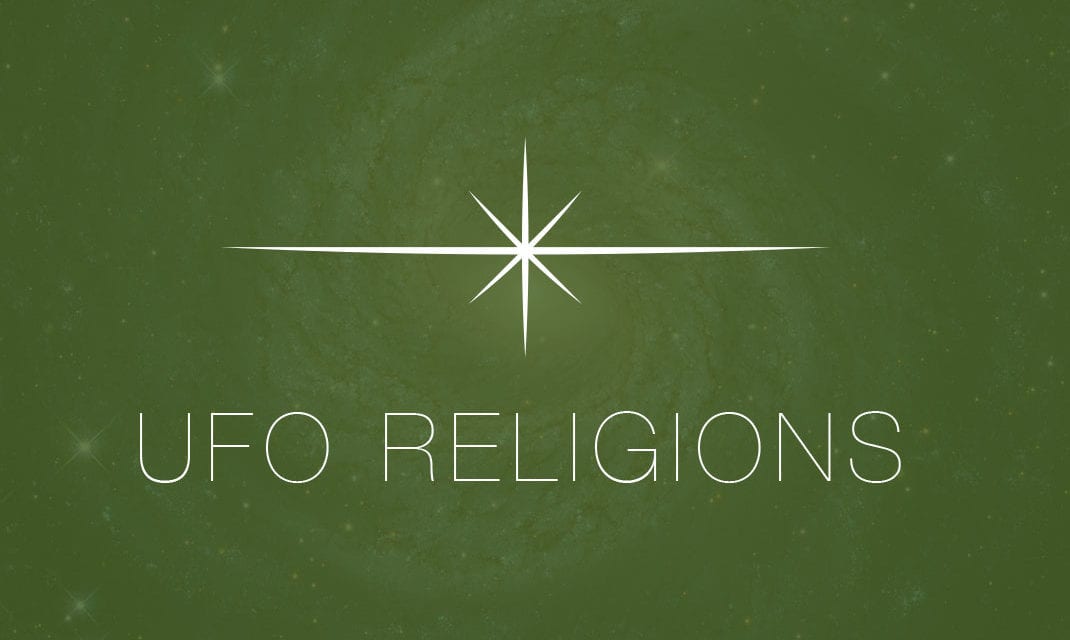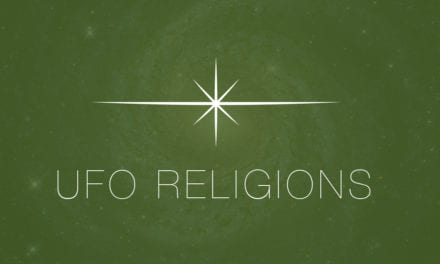The news of the recent experiment by Prof. Milton Wainwright of the University of Sheffield has been making news of late. In case you haven’t read about it, here’s a synopsis of the experiment (from the provided link) and why it has garnered interest:
British astrobiologists are claiming to have found alien life form in the Earth’s stratosphere. They collected a small diatom frustule that could have come from space after sending a balloon to 27 km into the stratosphere during the recent Perseid meteor shower.
“Most people will assume that these biological particles must have just drifted up to the stratosphere from Earth, but it is generally accepted that a particle of the size found cannot be lifted from Earth to heights of, for example, 27 km. The only known exception is by a violent volcanic eruption, none of which occurred within three years of the sampling trip,” explained Prof Milton Wainwright from the University of Sheffield, who is a lead author of a paper reporting the discovery in the Journal of Cosmology (full paper).
The above-mentioned “diatom frustule” |
I will assume the comment about the volcanism is true, but other articles have mentioned at least one red flag:
The group’s findings were published in the Journal of Cosmology. We should point out, the credibility of the journal has been called into question before. Time magazine in 2011 pointed outthis scientist’s words:
Blogger and biologist P.Z. Myers puts it a little more pithily: the journal is, he writes, “the ginned-up website of a small group of crank academics.” Some of the articles that have appeared do nothing to dispel this idea include “The Origin of Eternal Life in the Multiverse” and “Sex on Mars: Pregnancy, Fetal Development, and Sex in Outer Space.”
The I’ve been on that journal’s website before, and the titles above aren’t made up. The other problem with the journal is that it doesn’t produce articles by blind peer review. Rather, authors of submitted papers themselves submit a list of people whom they presume are qualified to review the paper. It isn’t hard to see the problem with that (“I want my paper published, can I think of five friends with PhDs that like me and my ideas and who will almost certainly approve my paper”). Ouch. That’s really a problem. It tells me that the journal’s creators feared that some papers they’d want to put before the public eye in a presumably academic context might not make it. That isn’t the goal of scholarship (or shouldn’t be).1
From a layman’s perspective, one obvious problem (that may or may not be a real problem – hope someone in the science community asks) with the study is: “How does Wainwright know that his balloon didn’t pick up an organism within earth’s atmosphere on the way up to the 27 km mark?” What I mean here is that, while such particles are “generally accepted” as being incapable of floating up to that height, how do we know it couldn’t have been picked up at a lower height and brought along for the ride? (Or, for that matter, on the way down when the balloon landed). Were there foolproof safeguards against those possibilities?
It’s encouraging that they will seek to repeat the experiment in October to “coincide with the upcoming Haley’s Comet-associated meteorite shower when there will be large amounts of cosmic dust.” Hopefully that will provide the kind of data needed to rule out this layman’s concerns and the concerns of other specialists. Ideally, it would be prudent for them to publish those results under blind peer review.
Finally, note once again how far this is from certainty with respect to panspermia. If you’re finding an organism that isn’t found on earth, how could it have contributed to evolution? Answer: it couldn’t have. But the reasoning extends that other such particles that are traceable to earth by some means came here. In other words, it’s not evidence of panspermia, but it would add coherence to the extrapolation.





Thank you for providing the link to the paper in question.
The study is not definitive. One issue is that the control experiment to demonstrate that the slides did not acquire contamination during transit through the lower atmosphere was conducted on a completely separate flight. What they have is fine as far as it goes, but it does not and cannot speak to the conditions prevailing when the actual samples were acquired. This means the investigators have no way to tell if a breach of sterility occurred when the sample with the purported diatom was taken. A control experiment is best done in parallel under the identical conditions at the same time as the sample is taken. What the investigators have done here is to check their method (good idea) and then make the assumption that everything went as planned when the took the real sample, a risky strategy and not a true control.
In addition, if the transit of extraterrestrial bodies (comets) in the vicinity of our planet is the transport mechanism, it leads to the suggestion that the deposition process is not uniform. In other words it matters when one takes a sample and this leads to some testable hypotheses. They found one assumed diatom with a single tiny sample, but if a life-laden comet passes by, they should see the numbers leap. Anticipating success, now is the time to line up independent lab groups to assess their materials and methods. Fair warning, those scientists will probably want to see replicate samples and to know how thoroughly the ‘control’ samples were searched before declaring they had nothing on them. One problem for the researchers, the number of positive events (possible diatom part found) is low and one has to be certain the control samples were searched as thoroughly as the actual samples. To date, we have only been granted a limited peak at the data and must take on faith the work was well and fairly executed.
And now comes your observation about the assumption of whether the diatom was found. It is critical that they find an expert to weigh in. Making the point that diatoms are not associated with humans and this conforms the validity of their protocols is important. But, deciding confidently this hinges on an authoritative expert identification, which is lacking. Assuming diatom is very convenient, but is it correct? They have (apparently) one fragment of something. It might be a diatom, it might be from something else that is associated with humans after all. As it stands now, we are presented with an un-replicated study that may or may not have found what it purports to have found.
In principle, this is a huge possible discovery. Given its potential significance, this group of scientists should be trying to find ways and means to gain the acceptance of the lager scientific community. To date, the group seems quite isolated and content to make claims that only they can verify. If they continue to avoid true scrutiny of independent peers while not bothering to confirm the veracity of their own assumptions, they can continue this game a long time.
Thanks for contributing, Dr. Kokjohn!
In 2011, Richard Hoover, a NASA scientist, claimed to find ET life in meteorites. He published in the JOC. The journal’s peer review process seemed to be this: an open letter to scientists inviting them to try to prove the paper wrong. When the journal didn’t get an avalanche of responses, they declared victory. When people asked why such an important finding wasn’t being published in Science or Nature, the editor of the JOC lapsed into conspiracy-speak about careerist scientists protecting status quo paradigms. Then it turned out that Hoover wasn’t an astrobiologist or a PhD as the JOC had claimed (he did work on solar physics for NASA, but the agency said he had no doctorate. A JOC PR person retorted that Hoover has two honorary PhDs!).
I opened up another 2013 JOC article today and noted something typical of fringe science. The numerous scientific references fell into two group: 1) recent papers published by frequent contributors to the JOC and 2) papers from established academic journals that were 25-50 years old — nothing the least bit current. (I could add: “3) assertions that a paradigm shift had occurred” but you all probably guessed that already)
(sigh); yep.
I wouldn’t know if their sampling was fool proof, but this is how it is described in their paper.
and
http://journalofcosmology.com/JOC22/milton_diatom.pdf
A whopping 6 pages.
So, theoretically, they may have found a diatom at altitude.
It is easy to falter with a typo, but gosh, for such an earth-shattering claim you’d hope they’d let some fresh eyes review the paper. I have added the bolded reference in the following citation:
Surely they meant the “former” possibility.
Not promising…
Had to laugh at “whopping”!
Mr. Richard B. Hoover may not have an PhD, but he was certainly involved in astrobiology research for NASA. There seems to be a strange trend for people working in this field to gravitate twoards the idea of a living universe: Fred Hoyle(deceased), Prof. Chandra Wickramasinghe and Prof. David S. Mckay (deceased). Has the thought ever crossed your mind, no matter which titles involved or journals published that there may be something very strange going on in the universe? The biopan experiments on the ISS have not weakened those conclusions in the slightest, quite in the contrary…
I don’t know why life elsewhere has to be characterized as “strange”. Why would life elsewhere be “strange”? Astrobiologists would say there’s a reasonable expectation if one is just counting the elements common to life being present in space. It’s the combination that matters, though.
And if you had read through much of this blog, you’d know I’ve considered this. I just ask for evidence, not wishes and math equations.